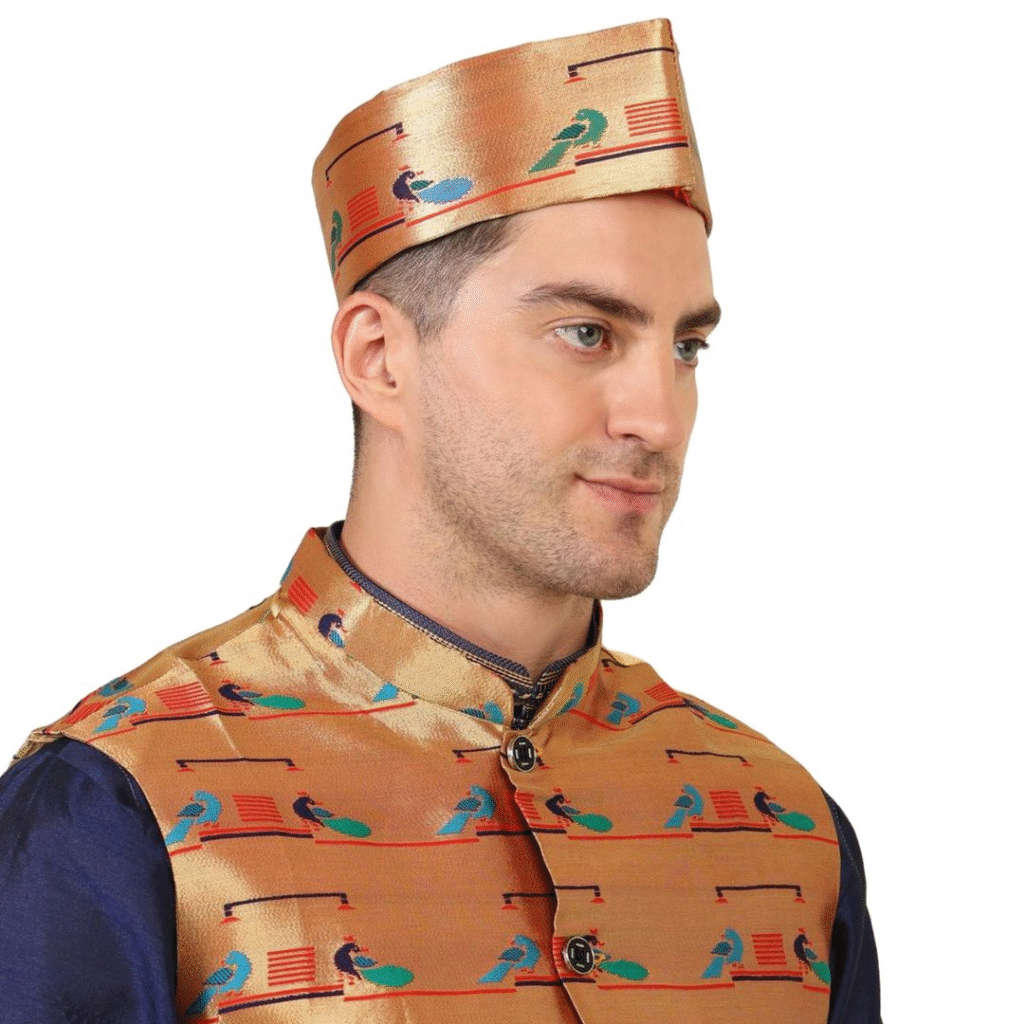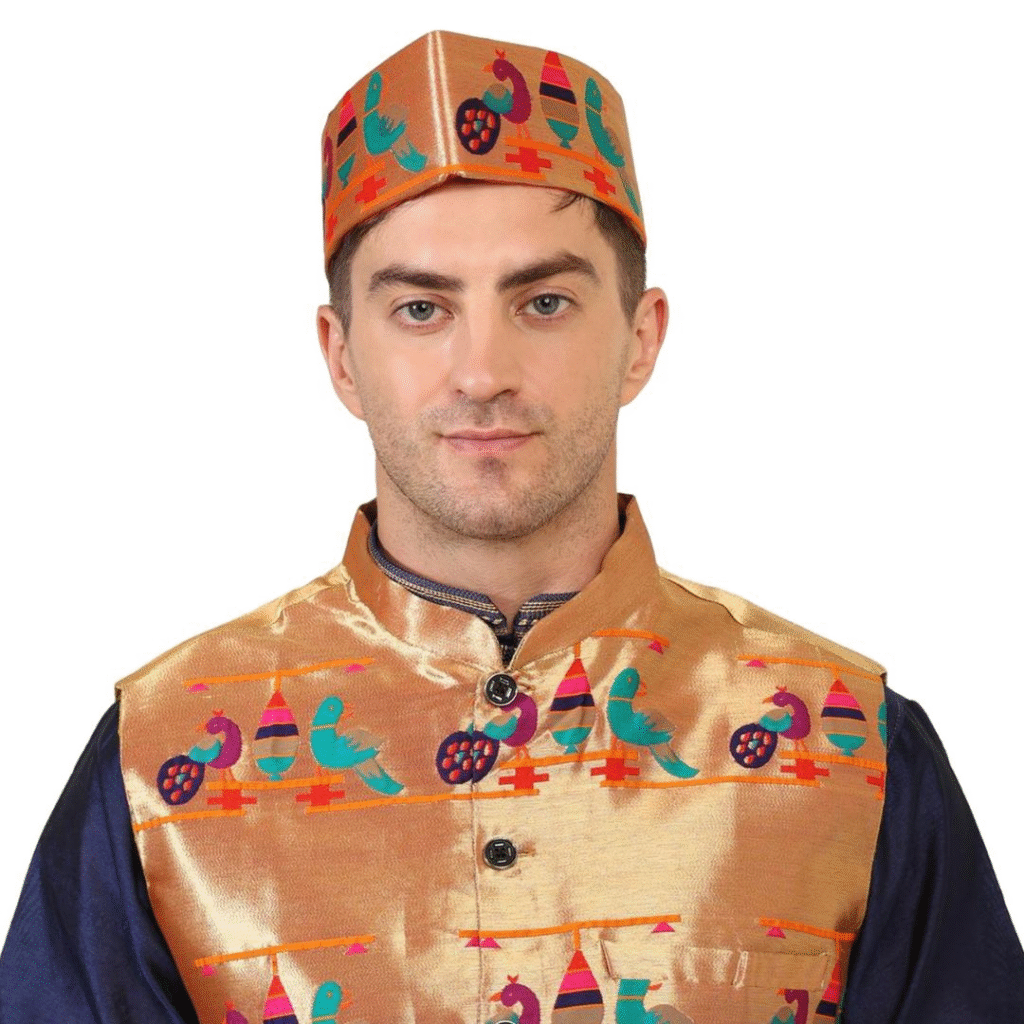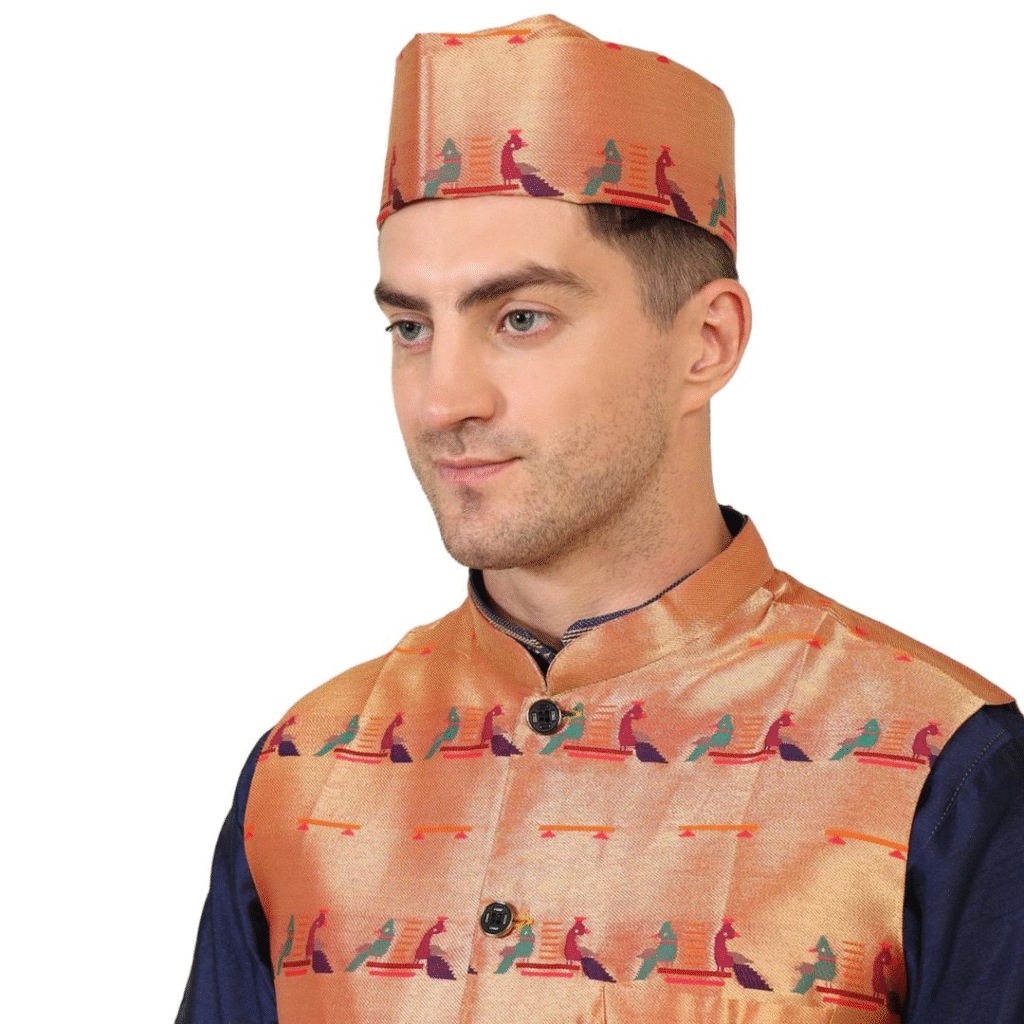


No Maharashtrian wedding is truly complete without the regal presence of the Paithani Topi. More than just a traditional headpiece, the Paithani Topi symbolizes cultural pride, family legacy, and the elegance of ethnic styling. Whether it adorns the groom, the bride’s father, or the youngest cousin, it brings a sense of unity, heritage, and grace to every celebration.
The use of the Paithani Topi isn’t just aesthetic—it’s deeply symbolic. Originating from the revered Paithani weaving tradition of Maharashtra, these topis feature intricate zari patterns and motifs like peacocks, parrots, and floral vines. Today, Kanira has reimagined this timeless accessory in new, comfortable formats perfect for long wedding rituals, baraats, and photo sessions.
Paithani weaving was once the domain of royalty. Its fine silk, handwoven motifs, and use of real gold and silver zari threads made it one of the most luxurious fabrics in India. Translating that same heritage into the Paithani Topi brings centuries of cultural prestige into modern weddings. Wearing the topi is akin to donning a crown—one that celebrates family values, tradition, and community pride.
In Maharashtrian weddings, every garment and accessory carries meaning. The groom’s attire, in particular, symbolizes his transition into a new chapter of life, and the topi completes this ensemble with dignity and cultural identity.

This topi features a bold double peacock motif woven with authentic zari, offering richness in color and symbolism. Perfect for the groom or elder family members, it’s the kind of heirloom-worthy piece that adds grandeur to any wedding outfit.
Style Tip: Pair with an off-white kurta-pajama and a Paithani stole for a truly regal appearance.

With vibrant green and gold tones, this topi brings a more youthful and playful energy to the occasion. It’s ideal for groomsmen or younger family members who want to match the groom while maintaining individual flair.
Style Tip: Coordinate with matching Paithani borders on jackets or kurtas for a synchronized wedding look.

Elegant, balanced, and steeped in symbolism, the Jodi Peacock topi is a perfect match for wedding rituals like the muhurtam or saptapadi. Its symmetrical design signifies harmony and unity—just like a wedding should.
Style Tip: Team with the Paithani Jacket in the same motif for an elevated ceremonial outfit.
The Paithani Topi complements sherwanis, kurta sets, or dhoti ensembles with a distinct Maharashtrian identity. It provides a traditional twist to otherwise pan-Indian wedding styles.
Fathers, uncles, and brothers wearing topis bring a visual cohesion to wedding photos and ceremonies. It reflects unity, respect for tradition, and pride in family culture.
Mini topis and coordinated motifs help young members feel included while creating adorable photo-worthy moments.
In today’s fast-fashion world, wearing a Paithani Topi is a conscious act of preserving heritage. It’s about telling your wedding guests, “We honor our roots.” Whether it’s worn in a grand temple wedding or an intimate backyard ceremony, this accessory instantly transforms the mood, adding a dash of royalty to your overall look.
It’s more than tradition—it’s pride in woven form.
Looking to create a head-to-toe Paithani look for your wedding or festive celebration?
Explore All Men’s Paithani Wear — from jackets to kurtas and topis that tell a story of timeless heritage.
Don’t miss this related post on pairing your Paithani Topi with a classic jacket:
Style the Paithani Jacket for Weddings & Festive Occasions
Q1: Is the Paithani Topi only for grooms?
No. It’s traditionally worn by all male family members at Maharashtrian weddings, including elders, brothers, and even children.
Q2: Will it fit comfortably for long hours?
Yes. Kanira’s topis are designed with breathable inner linings and stretch panels to ensure a snug yet soft fit.
Q3: Can I wear a Paithani Topi with a modern sherwani?
Absolutely. It adds a touch of tradition to even the most contemporary sherwanis and suits.
Q4: Are these reusable for other events?
Yes. You can wear the topi at religious functions, family rituals, or festivals like Gudi Padwa and Ganesh Chaturthi.
Q5: Do the topis come in kid sizes?
Yes. We offer a variety of sizes to accommodate all age groups.
The Paithani Topi is more than a traditional accessory — it’s a symbol of cultural elegance, heritage continuity, and regional pride. At a time when wedding fashion often leans toward the generic, this handwoven headpiece brings authenticity, identity, and meaning to the most important day of your life. It crowns your ensemble with intention and invites every guest to witness not just a wedding, but a celebration of Maharashtrian legacy.